6 Kinds of Hydrangeas to Add Beauty and Diversity to Any Landscape
Learn how to enhance your home and outdoor space with these beautiful blooms.
Sep 16, 2024
Hydrangeas are beloved for their stunning blooms and versatility in the garden. With a variety of types and growing conditions, they can be a perfect addition to any landscape.
These flowers add beauty and diversity to any landscape. Whether you prefer the bold mopheads, elegant lacecaps, or sturdy panicles, there's a hydrangea for every gardener or flower lover.
By understanding the different types and their specific needs, you can ensure that your hydrangeas thrive and enhance your garden's aesthetic.
1. Bigleaf hydrangeas (Hydrangea macrophylla)
One of the most popular types of hydrangeas is the bigleaf hydrangea, which is beloved for its large, showy blooms. Native to Japan, bigleaf hydrangeas come in two main varieties: mophead and lacecap.
Mophead hydrangeas
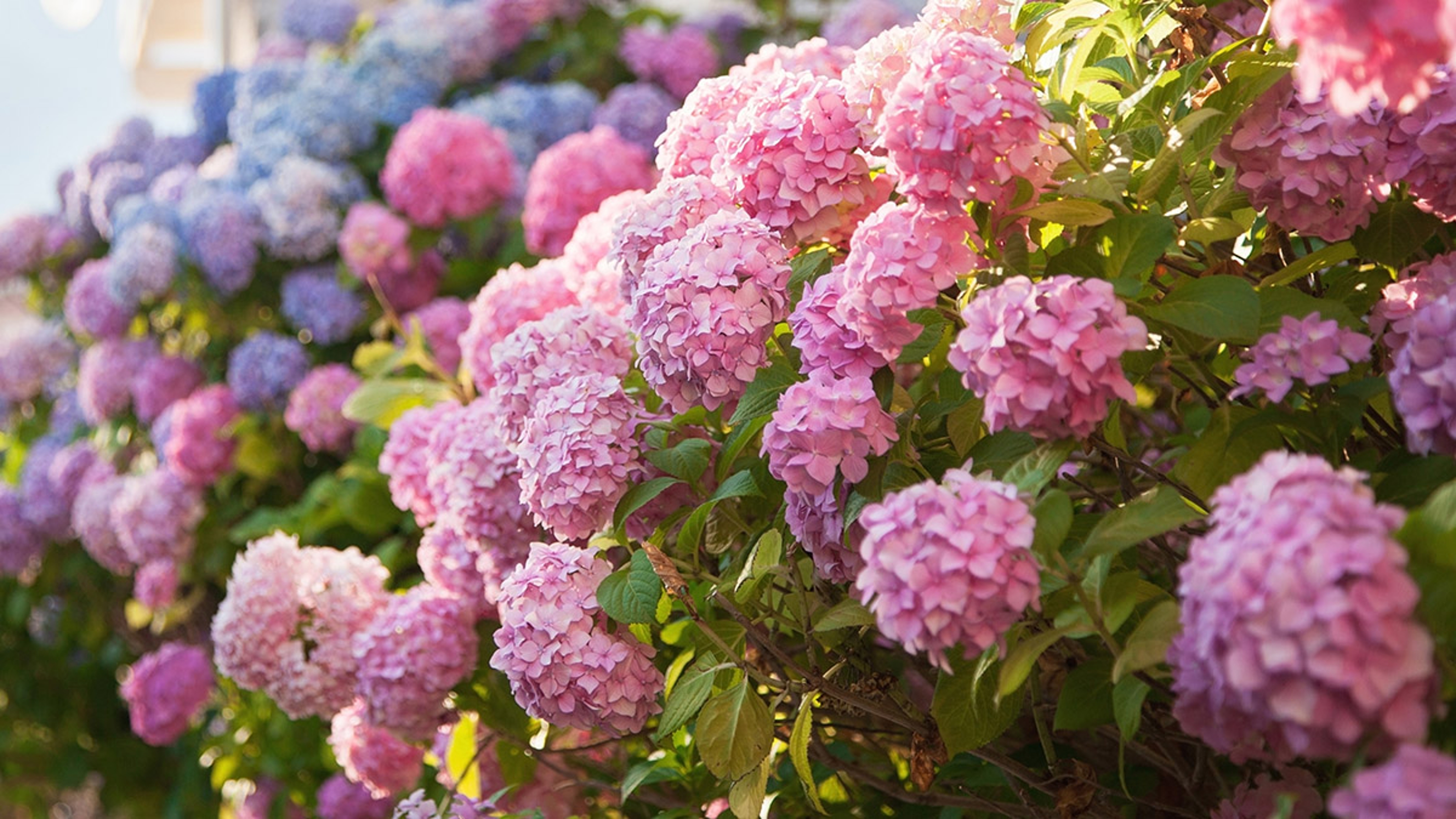
Mophead hydrangeas are known for their large, round flower clusters that can range in color from blue to pink, depending on the soil pH. Their blooms are typically dense and globular, resembling the head of a mop. These are the types of hydrangeas that are most commonly sold commercially.
USDA hardiness zones: 5-9
Bloom time: Early summer to fall
Soil needs: Well-drained, rich soil. Soil pH can influence bloom color.
Sun exposure: Partial shade to full sun
Growing tips: To maintain vibrant blooms, ensure regular watering and mulch to retain soil moisture. Prune right after blooming to encourage new growth.
Décor ideas: Mopheads are ideal for creating dramatic floral arrangements and can be used as focal points in garden beds.
Lacecap hydrangeas
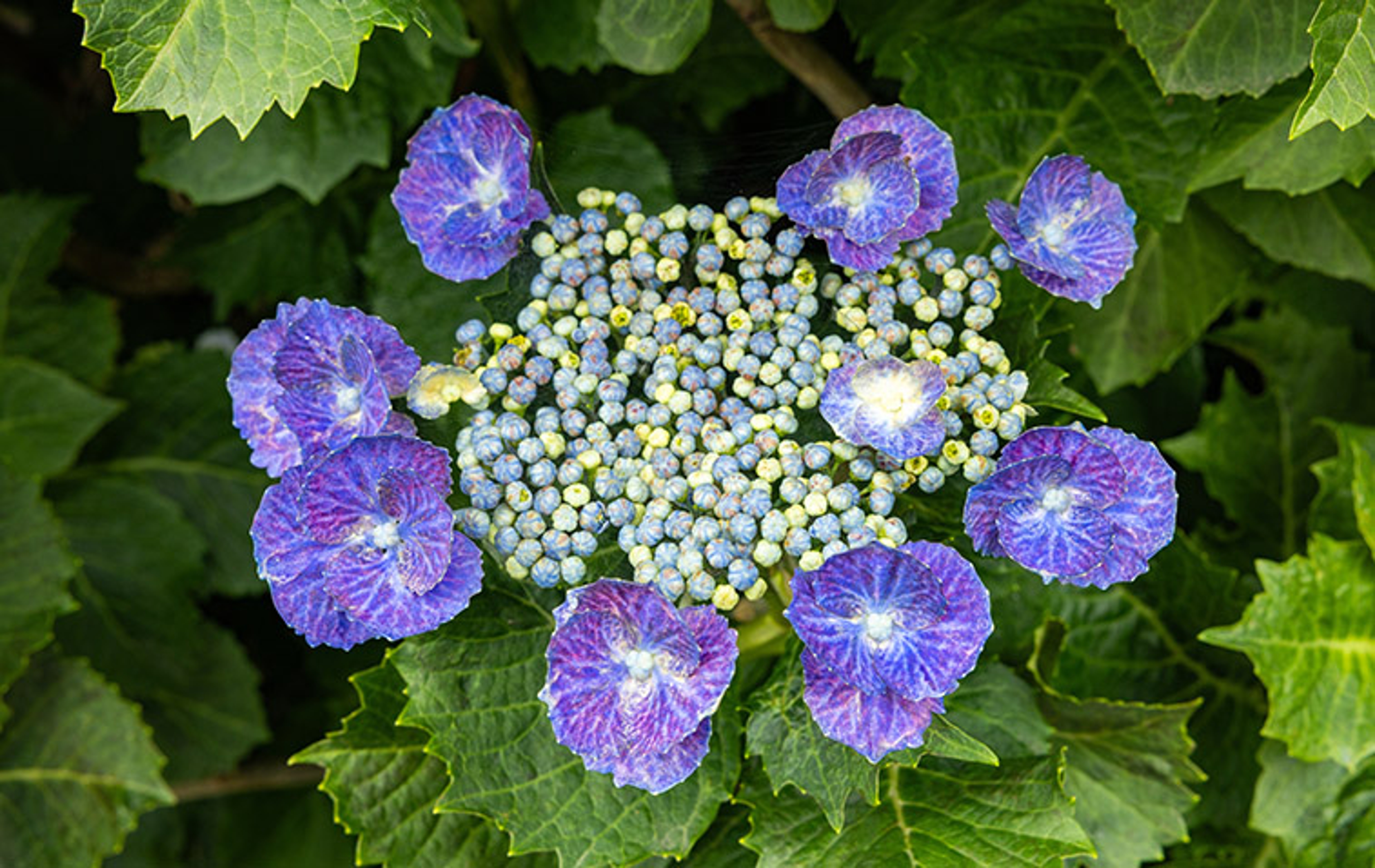
Lacecap hydrangeas have a unique flower structure, with a flat cluster of tiny fertile flowers in the center surrounded by larger, showy sterile flowers. This creates a delicate and intricate appearance.
USDA hardiness zones: 5-9
Bloom time: Early summer to fall
Soil needs: Well-drained, rich soil. Soil pH can influence bloom color.
Sun exposure: Partial shade to full sun
Growing tips: Similar to mopheads, lacecaps benefit from consistent watering and mulching. Prune after blooming to help maintain shape and vigor.
Décor ideas: Lacecaps add a touch of elegance to mixed borders and are perfect for adding texture to floral arrangements.
2. Mountain hydrangeas (Hydrangea serrata)
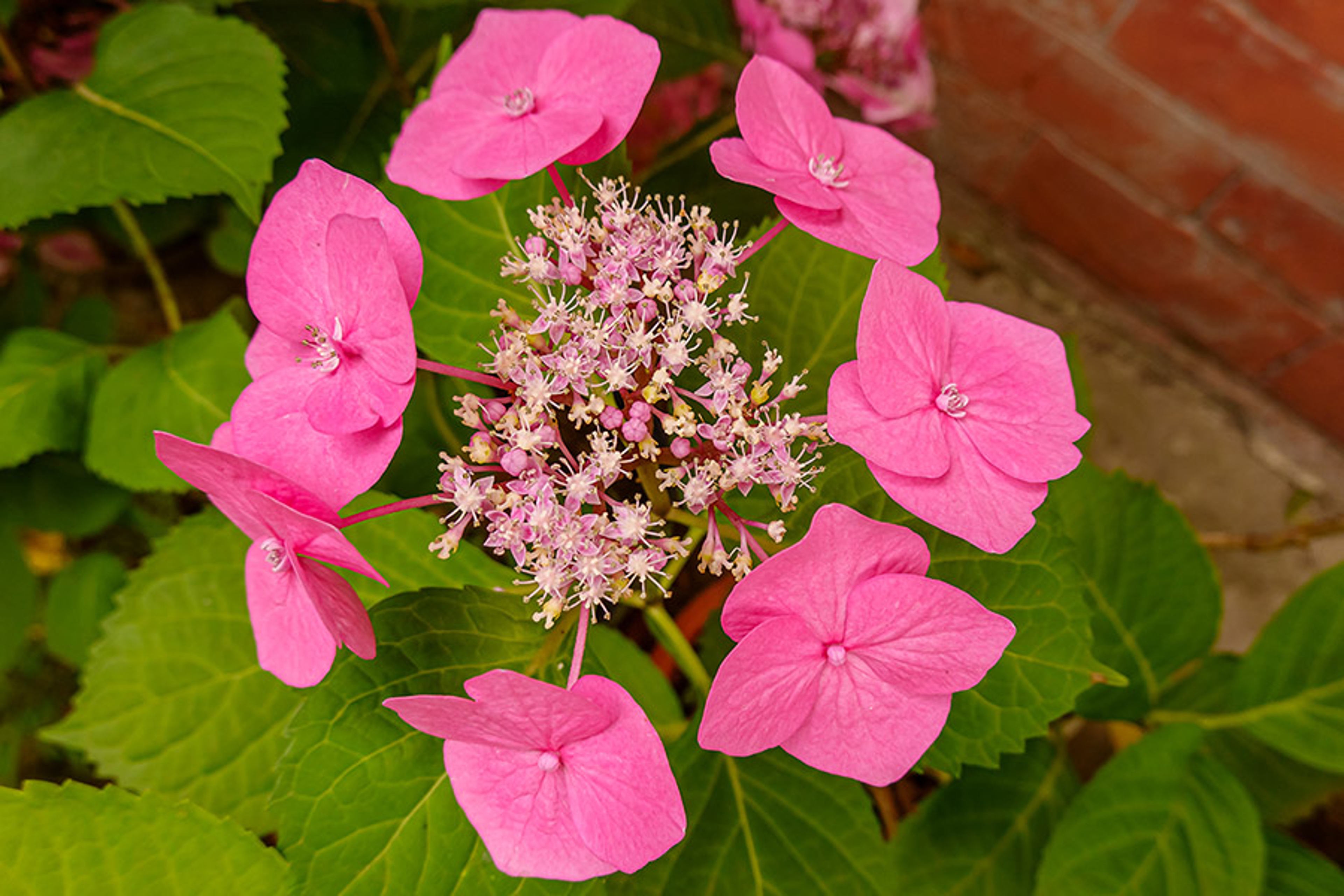
Mountain hydrangeas are more compact and have smaller flower heads than mopheads and lacecaps. The blooms are often pink or blue and are hardy, making them suitable for challenging climates.
USDA hardiness zones: 4-8
Bloom time: Early summer to fall
Soil needs: Well-drained, rich soil. Soil pH can influence bloom color.
Sun exposure: Partial shade to full sun
Growing tips: Mountain hydrangeas are low maintenance. Water regularly and prune occasionally after flowering to promote healthy growth.
Décor ideas: These flowers are excellent for creating compact hedges and can be used in container gardening for patios or balconies.
3. Panicle hydrangeas (Hydrangea paniculata)
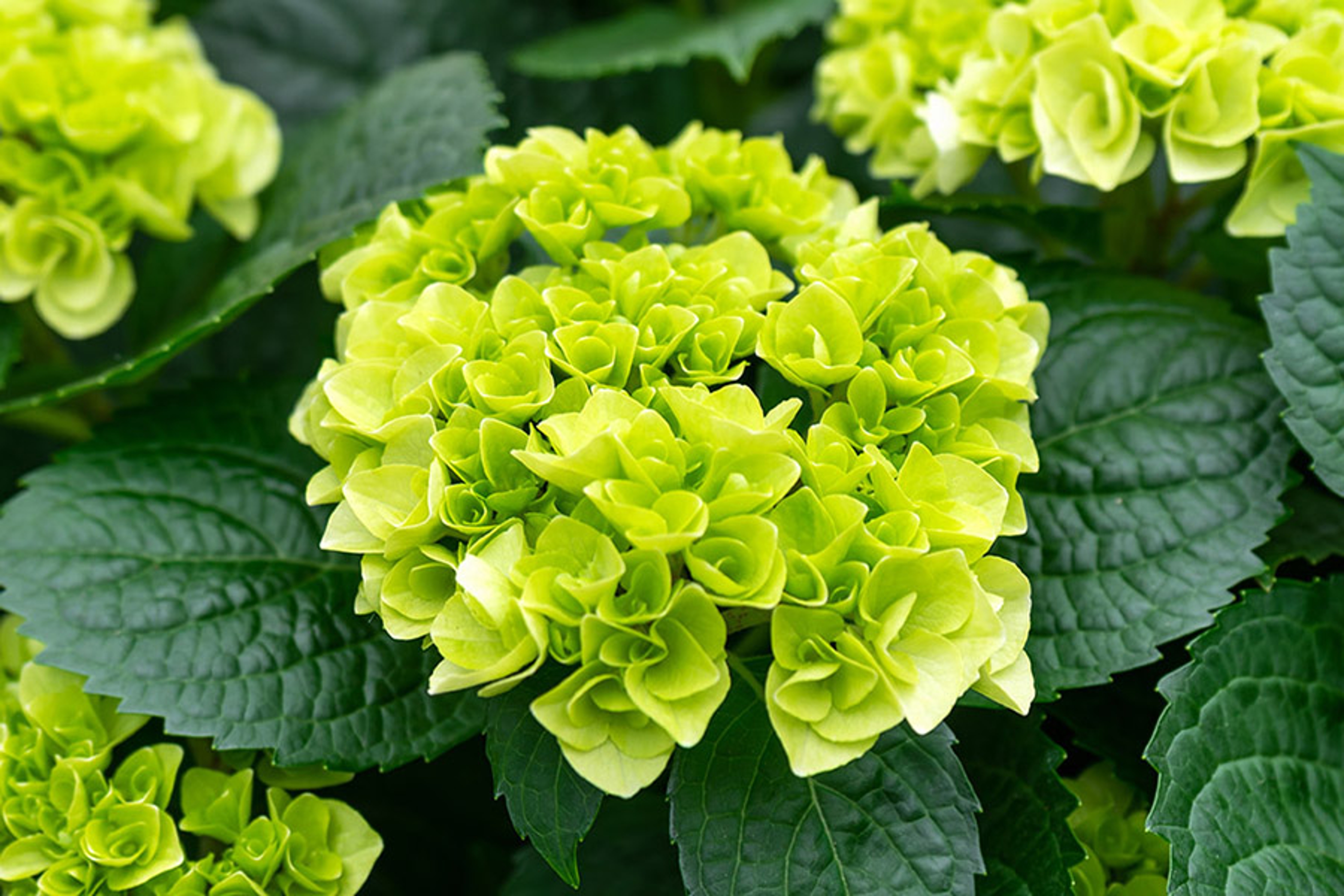
Panicle hydrangeas produce large, cone-shaped flower clusters that can reach up to 12 to 18 inches in length. The flowers start as white or green and gradually turn pink or red as they mature.
USDA hardiness zones: 3-8
Bloom time: Mid-summer to fall
Soil needs: Adaptable to various soil types but prefer well-drained soil
Sun exposure: Full sun to partial shade
Growing tips: Panicle hydrangeas are hardy and can tolerate more sun than other hydrangea types. Prune in late winter or early spring to encourage strong new growth.
Décor ideas: Their large, showy blooms are perfect for creating statement pieces in sprawling garden beds and can also be dried for long-lasting indoor arrangements.
4. Smooth hydrangeas (Hydrangea arborescens)
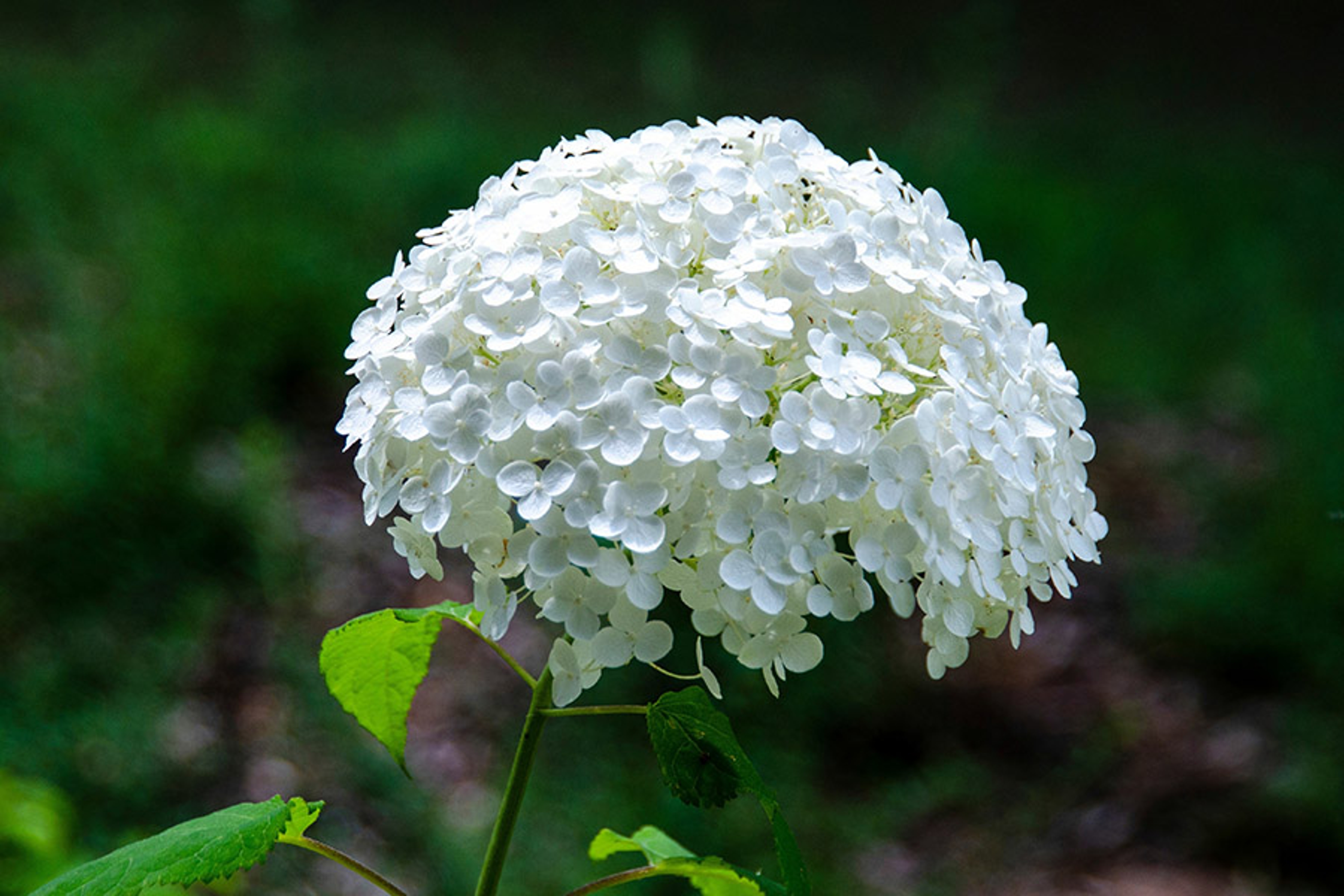
Smooth hydrangeas feature large, round clusters of white or pink flowers. The 'Annabelle' variety is particularly popular for its massive blooms.
USDA hardiness zones: 3-9
Bloom time: Late spring to fall
Soil needs: Well-drained, rich soil
Sun exposure: Partial shade to full sun
Growing tips: Smooth hydrangeas are easy to care for and tolerate various soil conditions. Prune back hard in late winter to early spring for vigorous blooming.
Décor ideas: Ideal for creating lush, green hedges, smooth hydrangeas are also a popular choice for brightening shady areas in the garden.
5. Oakleaf hydrangeas (Hydrangea quercifolia)
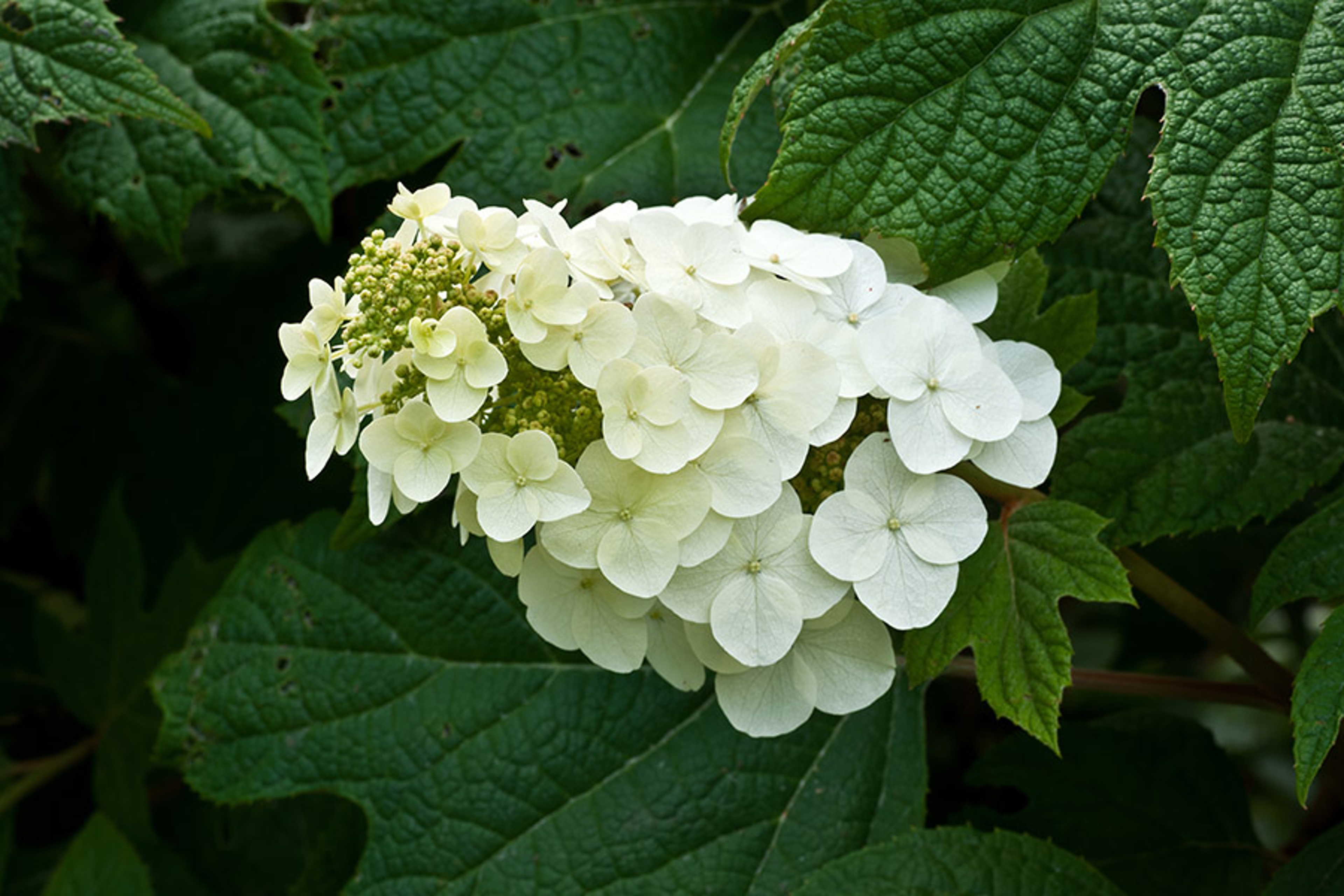
Oakleaf hydrangeas have distinctive, lobed leaves that resemble oak leaves. Their conical flower clusters can be white or pink and often turn a beautiful burgundy in the fall.
USDA hardiness zones: 5-9
Bloom time: Early summer to fall
Soil needs: Well-drained, slightly acidic soil
Sun exposure: Partial shade to full sun
Growing tips: Oakleaf hydrangeas are drought tolerant once established. Prune sparingly to maintain shape and remove dead wood.
Décor ideas: These blooms add a unique texture to gardens and are great for woodland settings or naturalized areas.
6. Climbing hydrangeas (Hydrangea anomala subsp. petiolaris)

Climbing hydrangeas are vigorous vines that can reach up to 50 feet in height. They produce fragrant, flat-topped clusters of white flowers.
USDA hardiness zones: 4-8
Bloom time: Late spring to early summer
Soil needs: Well-drained, rich soil
Sun exposure: Partial shade to full sun
Growing tips: Climbing hydrangeas can be slow to establish but are worth the wait. Provide strong support structures, such as trellises or walls, and prune to control growth.
Décor ideas: These plants are perfect for covering fences, arbors, and walls, adding vertical interest and charm to the garden.









